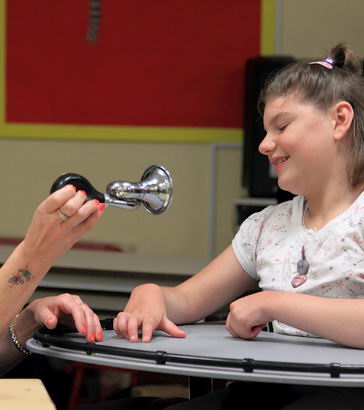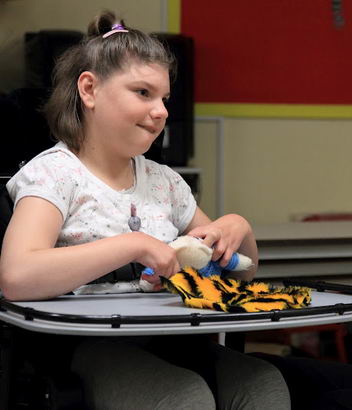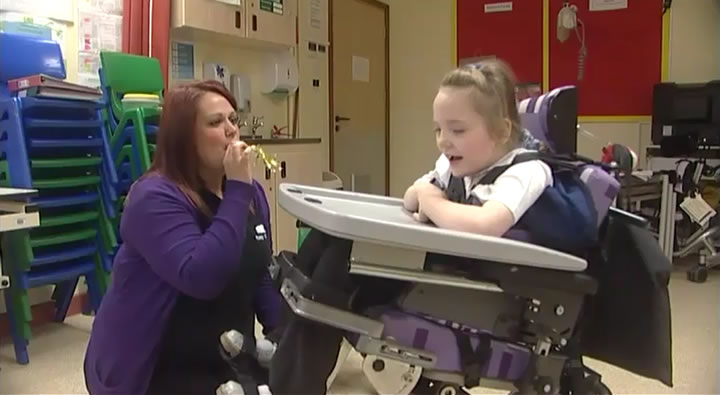
Here we introduce the distinction between pre-intentional behaviours, voluntary behaviours and unconventional communication. The Affective Communication Assessment (ACA) is explained and summarised and there is an opportunity to practice and apply this in context.
Some pupils may be at a pre-intentional stage in the development of communication skills. They do not yet realise that they can control the behaviour of others through behaving in specific ways.
Read the information in the table and try to identify children with whom you work who might fit into each of these categories. How are their behaviours interpreted and how do you support and assess these behaviours, and to what effect?
| Pre-intentional behaviours | Involuntary/reflexive responses to stimuli usually associated with well-being, eg pain, hunger. These must be responded to and given meaning. | May be interpreted as expressing comfort and discomfort or like and dislike or showing interest in people. |
| Voluntary behaviours (not yet intentional) | Behaviours are voluntary, but not intentionally communicative. Pupils do not yet realise they can control the behaviour of others. | May be interpreted as protesting, wanting to continue an action, to obtain more or to attract attention. |
| Unconventional Communication | Pupils communicate intentionally but in unconventional ways, eg body movement, manipulation of adult. They realise that other people can be used to obtain something they want (proto-imperative). | May communicate refusal/rejection, a request for more, a request for action/object, a request for attention or affection. |

Affective communication assessment was developed as a way of recording observations of how pupils respond to systematic
presentations of different tastes, touches, smells, sounds,
sights, etc.
Read more about it in this document.
Assessment takes the form of noting and recording responses to a range of planned experiences. For these individuals their responses and signs can be difficult to identify and interpret, particularly for adults who are less familiar with them. The outcome of affective communication assessment should be records of typical ways of showing 'like' and 'dislike' in response to each type of experience.
Teachers can regularly present stimuli that are known to elicit 'like' responses. If the adults respond accordingly and
consistently to their pupils' behaviour, it may give the pupils an awareness of their own ability to affect their environment
in the context of an
enjoyable activity.
In this video Leanne, a teaching assistant, is working with Alice, a seven year old pupil who has no expressive speech
or other formal communication skills. The focus of the activity is upon trying to elicit strong like or dislike responses
from Alice in relation to
specific stimuli.
Note how Alice is being encouraged to interact with Leanne to get repetition of something that she likes. Out of these kinds of interactions intentional communication may well develop.
After you have viewed the video,
read the commentary.
Try using the approach featured in the video with a child that you know well. You may find it helpful to make a video record of the pupil interacting with you or someone else so that you can repeatedly view sections.
A written record should describe the topography of the 'like/dislike' responses, what was offered as an experience and any contextual details that are significant.

You can read more about affective communication assessment on the website of Dr Mark Barber, who was one of the team who originally developed it.
Here are the manual and record sheets from his website:
